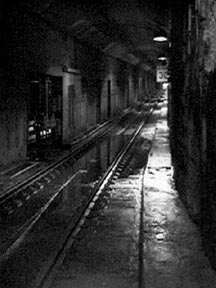| Access All Areas | 2005-10-17 13:50 0 comments |
 by Flemming Funch by Flemming FunchAccess All Areas is a book by Jeff Chapman, AKA Ninjalicious, a fellow with a passion for "Urban Exploration", that is, finding your way into places you weren't supposed to go. Forgotten subway tunnels or sewers, abandoned buildings, etc. City hacking. Jeff previously published a zine on urban exploration called "Infiltration". For those who don't know Infiltration, it's one of the most popular and well-regarded zines in the world. And for excellent reason: it's filled with great real-life adventure stories, homegrown yarns peculiarly native to our era. Instead of seeking excitement travelling abroad as I did, Jeff found it in his own city. He would knock off work at his day job and check on how the Sheppard Subway dig was going; pop by an interesting looking church he'd heard about at Yonge and Lawrence; see if there were any unlocked doors today at Union Station. It was part of his life and how he saw the world. He died shortly after the book was published. More here. Anyway, I've always found urban exploration fascinating. Not that I particularly have done it. And not that I necessarily feel like breaking into underground catacombs in the middle of the night. So, maybe my interest is more philosophical. The idea of going where you're not supposed to go. Demanding access to wonderous worlds that are kept off limit. Taking any closed door as a challenge. Seeing what is under the surface. Tracing the invisible infrastructure of society. Discovering where the the pathways go, unexpectedly. Mapping connections when no public map exists. |